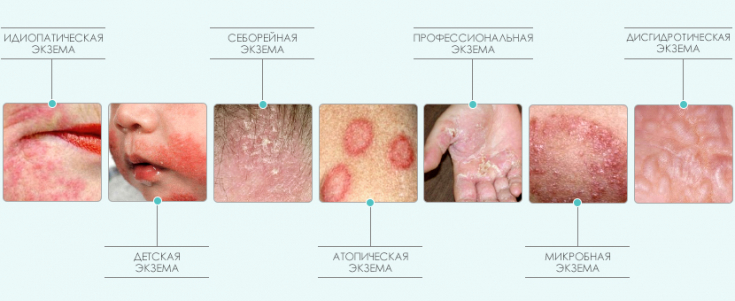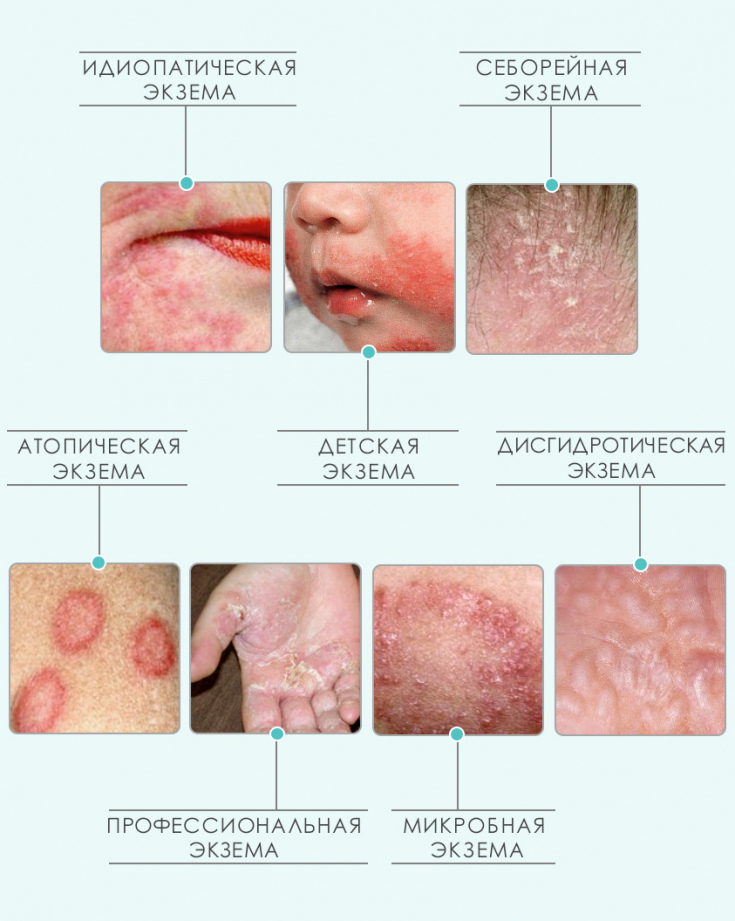The term "eczema" is usually understood as allergic inflammatory skin reactions that occur in response to internal and external stimuli, prone to chronic course and exacerbations, manifested by rash, hyperemia, infiltration.
Exacerbations of eczema significantly worsen the patient's well-being, as they are accompanied by intense itching, weeping, peeling and extensive foci of inflamed skin.
Therapy is selected individually, taking into account the manifested symptoms of the disease and the type of eczema. What are the types of eczema? Learn about eczema treatment at estet-portal.com.
Factors affecting the development of eczema: types of eczema
The eczematous process develops as a result of the complex action of neuroallergic, endocrine, metabolic and exogenous factors. With a genetic predisposition in patients with eczema, suppression of immune reactivity is formed. There is no unified generally accepted classification of eczema today, according to estet-portal.com.
Follow us on Instagram!
In modern science, neuroendocrine and immunological disorders (in particular, a decrease in the functional activity of T-suppressors) are of the greatest importance in the occurrence of eczema. Psychogenic factors influence the clinical course of the disease.
The course of the eczematous process is characterized by acute, subacute and chronic phases. There are several types of eczema.
Main types of eczema:
• true eczema;
• acute eczema;
• chronic eczema;
• seborrheic eczema.
Features of the clinical course of the true type of eczema
True eczema is characterized by a chronic course and a tendency to frequent exacerbations. On the face, eczema is localized selectively. The main symptoms of the disease are hyperemia, edema, vesiculation and pronounced weeping. The focus has many clustered microvesicles filled with serous fluid.
Skin rash - eczema, ringworm or just allergies
Microvesicles rupture, resulting in microerosion typical of this type of eczema – “serous wells”, secreting a dewy fluid. On the periphery of the focus of inflammation there are nodules and papules. When the process subsides, the exudate of erosion shrinks into crusts, then a small bran-like peeling appears. Eczema is characterized by true and false polymorphism of the rash. The disease is accompanied by severe itching and burning, sometimes pain.
Clinical manifestations of different types of eczema
Acute eczema is clinically characterized by polymorphism: redness, the appearance of small nodules, papules, pustules, scales, crusts, as well as more or less swelling of the skin. On swollen reddened skin with this type of eczema, soft small flat nodules, vesicles appear, some of which quickly turn into pustules.
Acute eczema occurs with relapses, which pass through the subacute stage into a protracted chronic course; the exacerbation passes quickly, and a long remission sets in.
Chronic eczema is characterized by the presence of an infiltrate in the lesions, due to which the skin in the lesions is dense.

On an infiltrated background, groups of small papular and vesicular rashes, peeling and bloody crusts are revealed; weeping may not be present, but itching persists with this type of eczema.
Chronic eczema is most often localized on the face, although its manifestations can occur throughout the body. Exacerbations occur frequently, both in old foci of inflammation and in new areas of the skin.
Seborrheic eczema is characterized by the occurrence of a process on the scalp and its further spread to other parts of the body. The disease occurs against the background of oily or dry seborrhea. Subjective sensations are most often absent.
Treatment of types of eczema: dietary features and choice of drugs
For all types of eczema, it is important to provide the patient with a balanced diet, the essence of which should be to limit the amount of carbohydrates, salt (up to a salt-free diet), spicy foods, smoked meats, citrus fruits, canned food, spices, chocolate. A certain effect can be obtained by using the unloading expurgatory method with magnesium sulphate.
Where should the treatment of pruritus begin
Prescribe drugs containing pancreatic enzymes, bile salts. In the complex therapy of eczema, sedatives are recommended to normalize the functions of the nervous system; prescribe small doses of tranquilizers.

Antihistamines for eczema reduce swelling, have a sedative effect. With significant edema, diuretics are prescribed. Immunomodulatory drugs have a good effect.
External therapy for all types of eczema includes lotions, pastes, ointments, and in the acute period, topical corticosteroids are preferred.






Add a comment